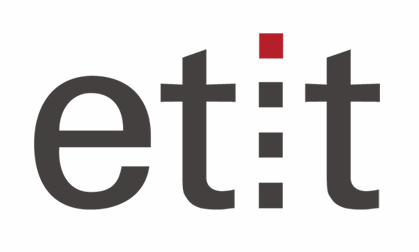Building Bridges
About international relations and terahertz systems
12.02.2020
Anuar Fernandez Olvera, doctoral student of the Chair Terahertz Devices and Systems, had been granted the rare honour of giving a keynote speech to an international audience. In the following, a brief look at the internationality of etit.
When it comes to international relations, the Department etit has quite a lot to offer. The most prominent include: The Trans-European alliance UNITE!, the strategic partnerships between the universities of Graz (Austria), Shanghai (China) and Virginia (USA) as well as the Marie Skłodowska-Curie Innovative Training Networks (ITN) geared towards the international training of new doctoral students. Anuar Fernandez Olvera, doctoral student of the Unit for Terahertz Devices and Systems, is a member of the Marie Skłodowska-Curie Innovative Training Networks. He recently returned from Paris where he held a keynote speech at the International Conference on Infrared, Millimeter, and Terahertz Waves (IRMMW-THz 2019), a rather extraordinary occurrence for a doctoral student. Usually, only senior scientists and researchers are invited for keynotes. So how did this come about?
Keynotes are an art form in themselves. They set the scene for later speeches of other speakers; they are the conference opener and consequently its poster child. Thus, Anuar Fernandez Olvera was accorded a rare honour indeed. He was destined for the task, though, as he has been building bridges during his research between both the TU Darmstadt and the Universidad Carlos III of Madrid for quite some time.
At the speaker’s desk in Paris, Anuar Fernandez Olvera spoke among other things about optical frequency comb generators, which are extremely precise measurement tools most suited for measuring virtually any spectroscopic fingerprint. In 2005, Theodor Hänsch and John L. Hall were awarded the Nobel Prize in Physics for their contribution to the development of laser-based precision spectroscopy. Anuar Fernandez Olvera also demonstrated that optical frequency comb generators could be translated to the terahertz domain in a compact and intuitive fashion.
Optical frequency comb generators operating in the terahertz range no longer need to be bulky or complex thanks to the research of Prof. Pablo Acedo of the Universidad Carlos III of Madrid and Prof. Sascha Preu, Chair of Terahertz Devices and Systems at the Department etit. Until then the only option for terahertz optical frequency comb spectroscopy had been the use of two rather bulky femtosecond lasers. However, since the cooperation between the Chair Terahertz Devices and Systems of the TU Darmstadt and the Universidad Carlos III of Madrid, the optical frequency comb spectroscopy is no longer a matter of complexity but of ingenuity.
Following his speech, Anuar Fernandez Olvera was asked by the plenary audience how the stability of the terahertz optical frequency comb generators could be enhanced even more. “We are working on that already,” the doctoral student replied. “Prof. Sascha Preu and Prof. Pablo Acedo are getting close to implementing applications that demonstrate the advantages of enhanced stability.”
On the whole, Anuar Fernandez Olvera looks back at the conference quite fondly. “It was very interesting and thought-provoking. Conferences like this provide an excellent overview of the current state of scientific research.” Of course, there was ample time for making and meeting friends and sharing news away from the conference rooms. In addition, there is nothing wrong with having a glass of wine with colleagues. It is Paris, after all.





